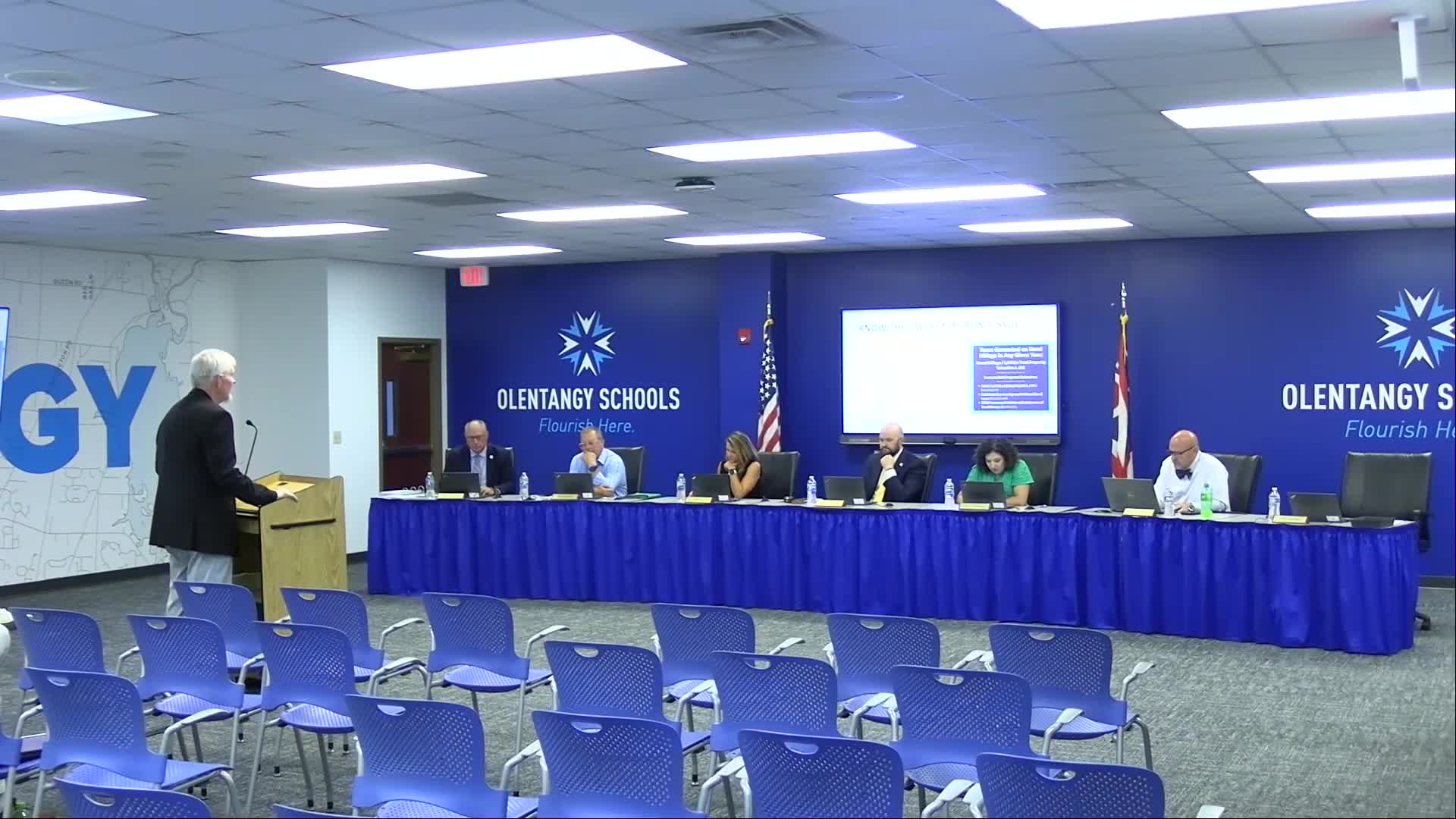Olentangy School District Discusses $235M Bond and Debt Service Strategy
August 07, 2025 | Olentangy Local, School Districts, Ohio
This article was created by AI summarizing key points discussed. AI makes mistakes, so for full details and context, please refer to the video of the full meeting. Please report any errors so we can fix them. Report an error »

During a recent Olentangy Schools Board of Education meeting, a critical discussion centered on the district's financial strategy for managing debt service and future construction projects. The board emphasized the importance of maintaining a reasonable carryover in the debt service fund, likening it to a homeowner's mortgage escrow account. This approach ensures that the district can meet its financial obligations without defaulting on payments.
For the 2025 calendar year, the district anticipates approximately $33.9 million in principal and interest payments to cover existing debt, which has been accrued to finance the construction of new schools, including Peachblow, Berlin, and Shell Meadows. The board highlighted that the current tax rate will suffice to cover these payments, with no additional mills required from property owners.
However, the conversation also touched on the rising costs of construction and the unpredictability of future expenses. As construction prices continue to escalate, the board acknowledged the challenges in predicting how much funding will be needed for future projects. They stressed the importance of timely action to avoid higher costs down the line.
A significant point raised was the district's lack of funding from the Ohio Facilities Construction Commission (OFCC) for new school facilities, attributed to a low equity ranking. This has resulted in the district receiving no state support for its growth, despite the state allocating $14 billion for school facilities across Ohio.
The board also addressed community concerns regarding the financial responsibilities of developers in funding new schools. They clarified that current laws do not allow the district to mandate developers to contribute to school construction costs. Instead, many of the district's schools are built on land donated by developers, highlighting a collaborative effort to support educational infrastructure.
In conclusion, the board's discussions underscored the delicate balance between managing existing debt, planning for future growth, and navigating the complexities of local development. As the district continues to expand, the focus remains on ensuring financial stability while advocating for responsible commercial development to alleviate the tax burden on residents.
For the 2025 calendar year, the district anticipates approximately $33.9 million in principal and interest payments to cover existing debt, which has been accrued to finance the construction of new schools, including Peachblow, Berlin, and Shell Meadows. The board highlighted that the current tax rate will suffice to cover these payments, with no additional mills required from property owners.
However, the conversation also touched on the rising costs of construction and the unpredictability of future expenses. As construction prices continue to escalate, the board acknowledged the challenges in predicting how much funding will be needed for future projects. They stressed the importance of timely action to avoid higher costs down the line.
A significant point raised was the district's lack of funding from the Ohio Facilities Construction Commission (OFCC) for new school facilities, attributed to a low equity ranking. This has resulted in the district receiving no state support for its growth, despite the state allocating $14 billion for school facilities across Ohio.
The board also addressed community concerns regarding the financial responsibilities of developers in funding new schools. They clarified that current laws do not allow the district to mandate developers to contribute to school construction costs. Instead, many of the district's schools are built on land donated by developers, highlighting a collaborative effort to support educational infrastructure.
In conclusion, the board's discussions underscored the delicate balance between managing existing debt, planning for future growth, and navigating the complexities of local development. As the district continues to expand, the focus remains on ensuring financial stability while advocating for responsible commercial development to alleviate the tax burden on residents.
View full meeting
This article is based on a recent meeting—watch the full video and explore the complete transcript for deeper insights into the discussion.
View full meeting
